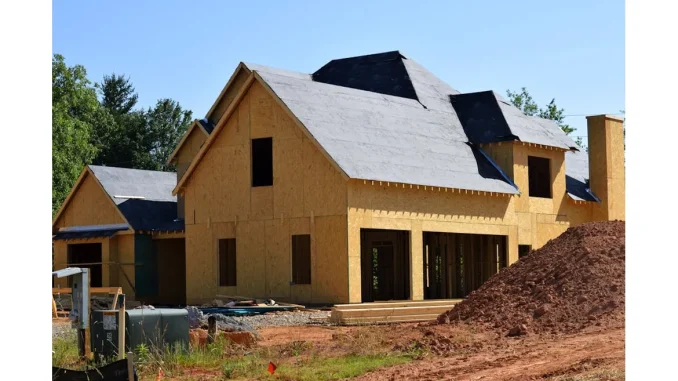
In an era where climate change is an immediate concern rather than a distant threat, the construction industry is undergoing a transformative shift. Timber, a renewable and recyclable resource, is emerging as a central figure in this revolution, offering a sustainable alternative to traditional building materials such as steel and concrete. The journey of timber from forest to construction site encapsulates a narrative of ecological balance, carbon sequestration, and energy efficiency, promising a greener future.
Timber’s journey begins in the forest, where it is part of a complex ecosystem. Unlike steel, which requires energy-intensive processes to produce, timber takes approximately 24 times less energy to convert from raw material to construction-ready form. This significant reduction in energy consumption translates to lower carbon dioxide emissions, positioning timber as a more environmentally friendly option. The story, however, extends beyond its energy efficiency.
When sourced sustainably, timber can be a renewable resource that contributes significantly to the long-term health of our planet. The Forest Stewardship Council (FSC) certification ensures that the forests supplying timber are managed in a manner that maintains biodiversity, respects the rights of indigenous communities, and preserves the ecological functions of the forest. By adhering to these standards, FSC-certified forests guarantee no net loss of forest area over time, maintaining the ecological balance crucial for planetary health.
Sustainably managed forests are essential to timber’s eco-friendly credentials. These forests not only combat illegal logging, a major driver of deforestation and habitat destruction, but also support biodiversity and local communities. Illegal logging disrupts ecosystems, displaces wildlife, and undermines the rights and livelihoods of indigenous peoples. By choosing FSC-certified timber, consumers and builders contribute to preserving these delicate ecosystems and promoting responsible forestry practices.
Moreover, sustainable timber sourcing is a powerful tool in the fight against climate change. Trees naturally absorb carbon dioxide as they grow, and this carbon remains stored within the timber even after the trees are harvested and used in construction. This process, known as carbon sequestration, effectively locks away carbon dioxide that would otherwise contribute to global warming. According to Dr John Talbot, a leading environmental scientist, “Using timber in construction is a form of carbon capture and storage. It’s a tangible way to lock away carbon dioxide that would otherwise contribute to global warming.”
The environmental benefits of timber extend beyond carbon sequestration. Timber buildings can be designed to be highly energy-efficient, reducing the need for heating and cooling and thus lowering overall energy consumption. Modern timber construction techniques, such as cross-laminated timber (CLT), allow for the creation of buildings that are not only strong and durable but also well-insulated against temperature extremes. This dual advantage of carbon storage and energy efficiency makes timber a compelling choice for eco-conscious builders.
The market for timber construction is expanding rapidly, driven by a growing awareness of environmental issues and advancements in timber technology. Architects and builders are increasingly recognising the versatility and aesthetic appeal of timber. Its natural beauty and warmth make it a popular choice for creating inviting and sustainable living spaces. Timber’s lightweight nature also reduces the need for heavy machinery during construction, minimising environmental disruption and reducing construction costs.
Timber’s potential is being realised in cities around the world, where timber skyscrapers are becoming a reality. These structures challenge the traditional dominance of steel and concrete, showcasing timber’s ability to create strong, durable, and aesthetically pleasing buildings. The 18-storey Mjøstårnet building in Norway, currently the tallest timber building in the world, stands as a testament to the possibilities of timber in high-rise construction. This innovative structure demonstrates timber’s viability in large-scale projects, pushing the boundaries of what is possible with this sustainable material.
Despite its many benefits, the success of timber as a sustainable building material depends on several factors, including responsible sourcing practices, economic considerations, and supportive policies. While timber can be cost-effective in the long run due to its energy efficiency, the initial costs and availability of sustainably sourced timber can pose challenges. Government policies and incentives are critical in overcoming these barriers and supporting the growth of the timber construction market.
Economic factors play a significant role in the adoption of timber in construction. The initial investment in sustainably sourced timber can be higher than traditional materials, but the long-term savings in energy costs and the environmental benefits make it a worthwhile investment. Governments can support this transition by offering subsidies, tax breaks, and updating building codes to recognise the benefits of timber. These measures can make sustainable timber more accessible and attractive to builders and consumers alike.
The future of timber in construction looks promising, driven by technological advancements and a growing demand for sustainable building materials. Innovations such as engineered timber products, including CLT and laminated veneer lumber (LVL), are expanding the possibilities for timber construction. These advancements enhance the properties and applications of timber, making it an even more attractive option for builders.
As urban populations continue to grow, the need for sustainable urban development will become increasingly urgent. Timber’s potential to be used in high-rise and large-scale construction projects positions it as a key player in the future of sustainable cities. Policy and regulatory support will be critical in driving the adoption of timber. Governments can incentivise the use of sustainable building materials through subsidies, tax breaks, and updated building codes that recognise the benefits of timber.
In essence, timber is set to play a significant role in the future of sustainable construction. Its environmental benefits, combined with advancements in technology and supportive policies, can drive a shift towards more eco-friendly building practices. This transition is not only essential for mitigating climate change but also for creating healthier and more sustainable living environments for future generations. As we look to the future, timber stands as a beacon of hope, promising a greener and more sustainable world for all.


Be the first to comment